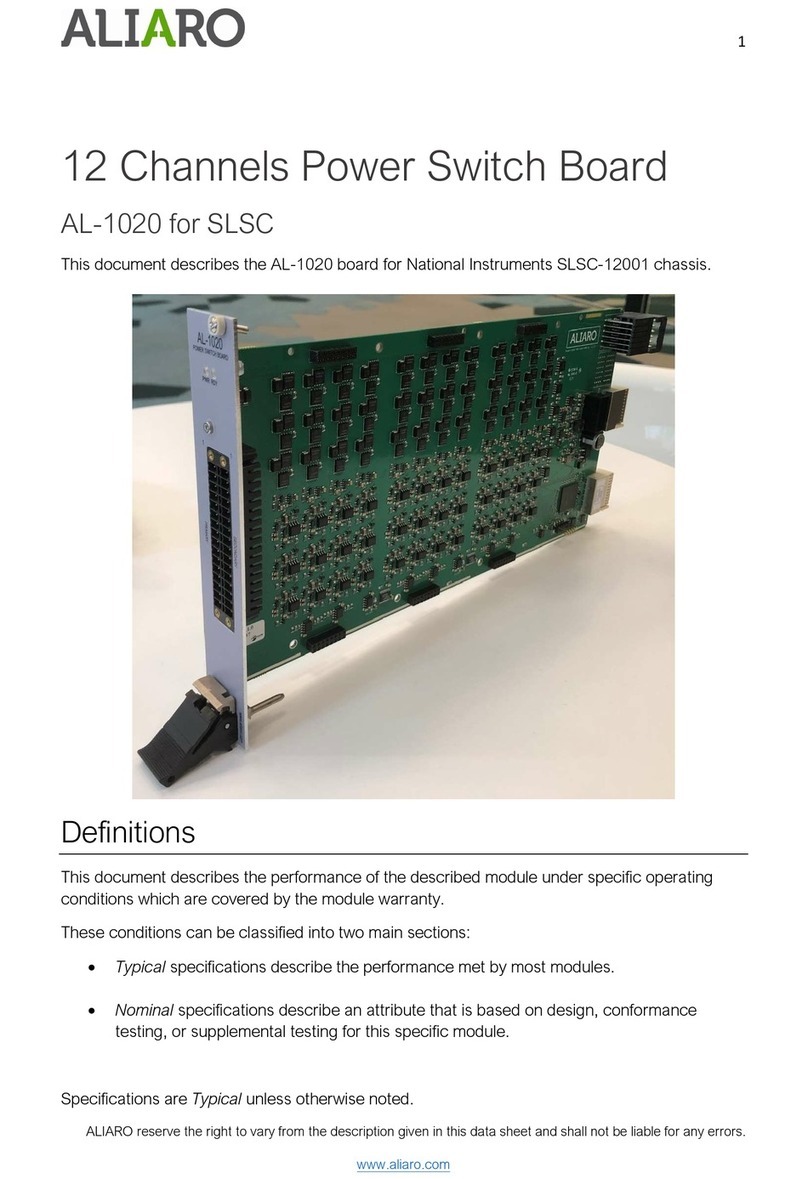ALIARO reserve the right to vary from the description given in this data sheet and shall not be liable for any errors.
www.aliaro.com
Contents
Definitions ............................................................................................................................................... 1
Conditions................................................................................................................................................ 2
Overview.................................................................................................................................................. 2
Description .............................................................................................................................................. 4
Features............................................................................................................................................... 4
Detailed description ............................................................................................................................ 4
Front Connector Pinout....................................................................................................................... 7
RTI Backplane ...................................................................................................................................... 9
Installation............................................................................................................................................. 10
Electromagnetic Compatibility (EMC) ............................................................................................... 10
Unpacking the module ...................................................................................................................... 10
What You Need to Get Started.......................................................................................................... 10
Installing the AL-2010............................................................................................................................ 11
Software Installation - SLSC LabVIEW Drivers................................................................................... 12
Software Installation - ALIARO Custom Devices................................................................................ 12
Software Installation - ALIARO xMove Configurator (Optional) ....................................................... 12
System Check..................................................................................................................................... 12
Operation .............................................................................................................................................. 12
Safety Guidelines............................................................................................................................... 12
System check using LabVIEW ............................................................................................................ 13
Maintenance ......................................................................................................................................... 13
Calibration ......................................................................................................................................... 13
Specification .......................................................................................................................................... 15
Definition and conditions.................................................................................................................. 15
Environmental Characteristics .......................................................................................................... 15
Physical characteristics...................................................................................................................... 15
Technical characteristics ................................................................................................................... 16
Safety Guidelines................................................................................................................................... 16
Product Certifications and Declarations................................................................................................ 16
CE Compliance................................................................................................................................... 16
Electromagnetic Compatibility Standards......................................................................................... 16
Environmental Management ................................................................................................................ 17
Waste Electrical and Electronic Equipment (WEEE).............................................................................. 17




























